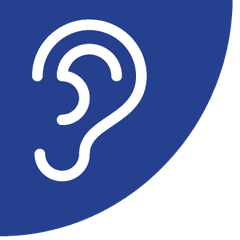Agencies Alert Employers to Risks of Hearing Loss from Chemical and Noise Exposures
A joint safety and health information bulletin recently published by OSHA and NIOSH describes ways to prevent hearing loss caused by chemical and noise exposure. The bulletin explains how exposure to certain chemicals, or ototoxicants, may cause hearing loss or affect balance, regardless of noise exposure. Ototoxic chemicals are classified based on the part of the ear they damage: neurotoxicants can damage nerve fibers and interfere with hearing and balance, cochleotoxicants can affect the cochlear hair cells and impair hearing ability, and vestibulotoxicants can affect the hair cells on the spacial orientation and balance organs.
Inhalation, ingestion, or skin absorption of ototoxicants can affect hearing sensitivity and may lead to a standard auditory threshold shift. Substances that contain ototoxicants include some pesticides, solvents, and pharmaceuticals. When workers are exposed to both these chemicals and elevated noise levels, their risk of hearing loss increases. Workers in manufacturing, mining, utilities, construction, and agriculture are potentially exposed to ototoxicants used in these industries. Firefighters, machinists, and those who work in printing, painting, and pesticide spraying are among workers at the highest risk for combined exposure to high noise levels and ototoxicants.
Toxicological information on safety data sheets can be used to identify ototoxicants in the workplace. Occupational health professionals should review SDSs for ototoxic substances and chemicals or ototoxic health hazards associated with product ingredients. Replacing these hazardous chemicals with less toxic ones is an effective way to reduce workers’ exposures to ototoxicants. In workplaces where it’s not possible to replace these chemicals, OSHA and NIOSH recommend establishing hearing conservation programs. Employers can also use engineering controls, ventilation, and personal protective equipment to protect workers.
OSHA requires employers to maintain noise exposures to below the Permissible Exposure Limit of 90 dBA averaged over eight hours. But the agency warns that combined exposures to noise and ototoxicants can lead to hearing loss even when exposures are below the PEL.
A
PDF
of the bulletin is available from NIOSH’s website
.
NEWSWATCH
NOISE

